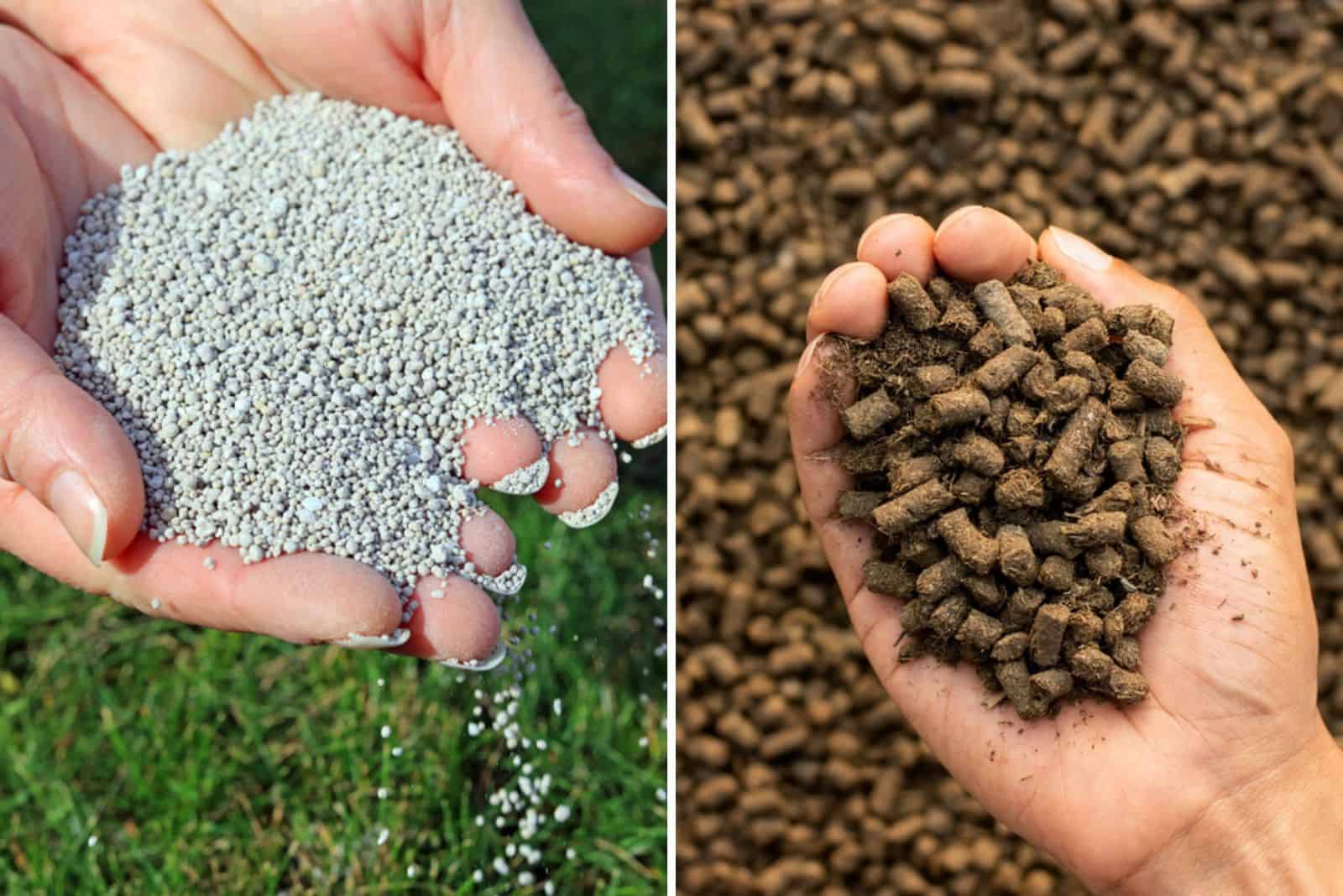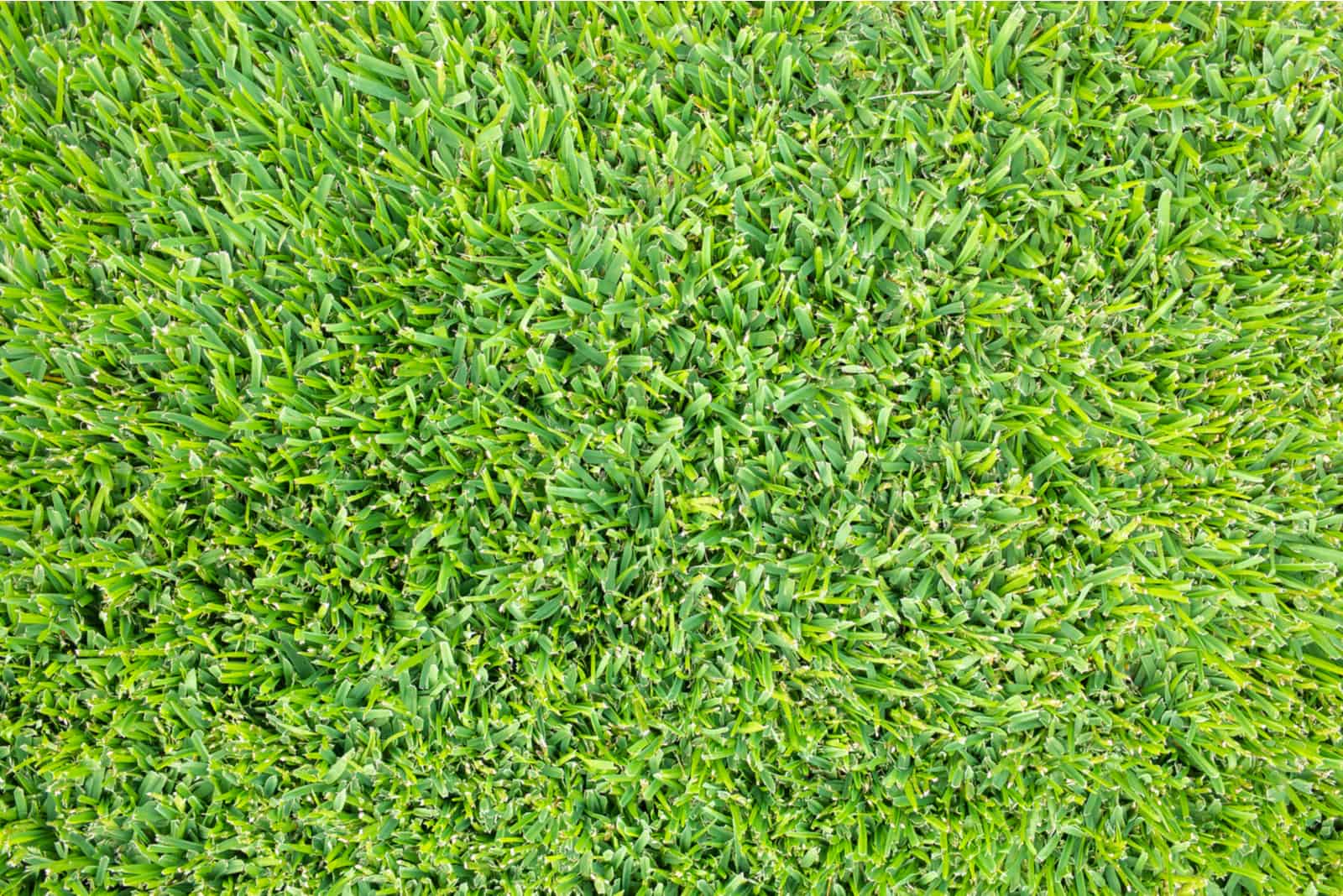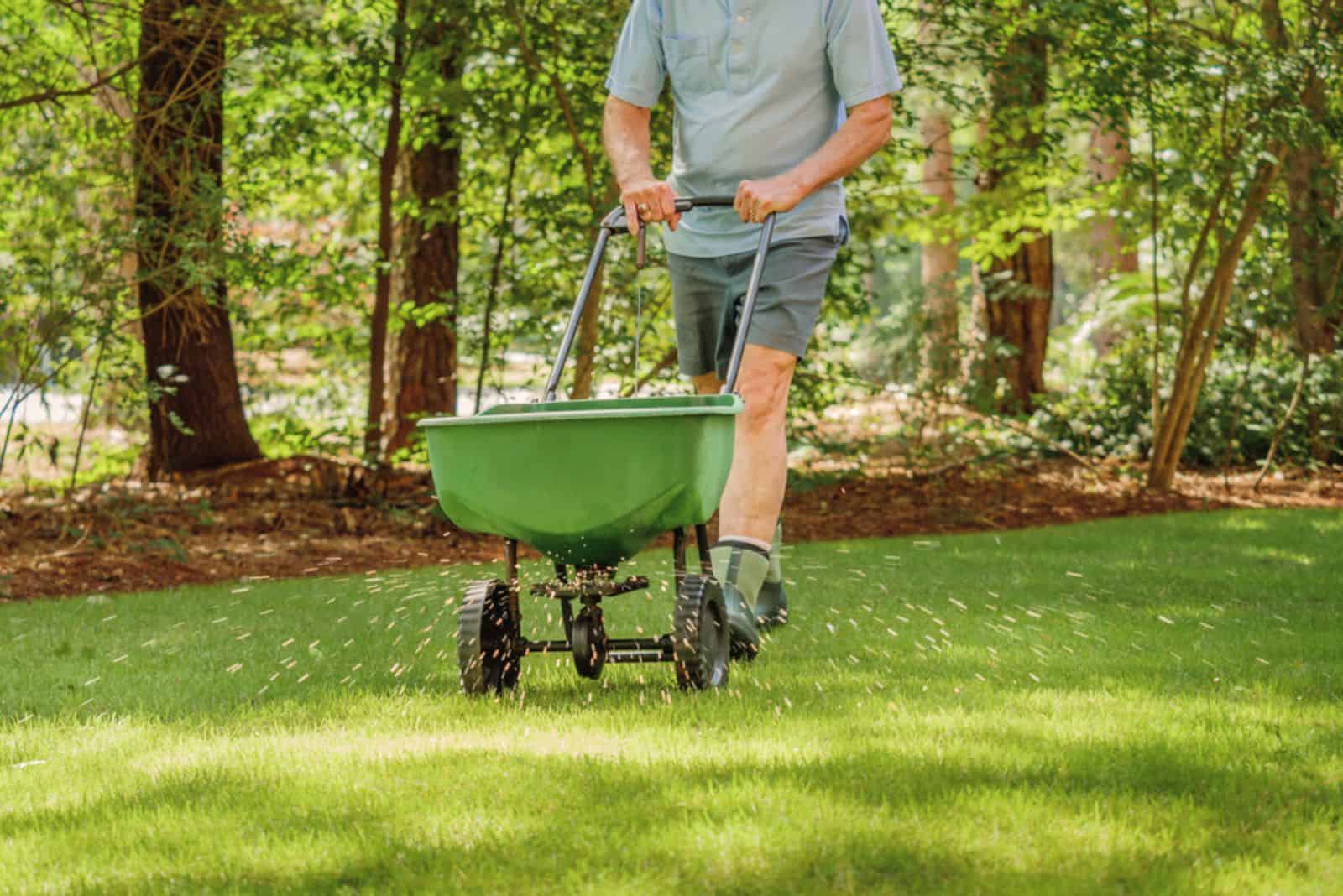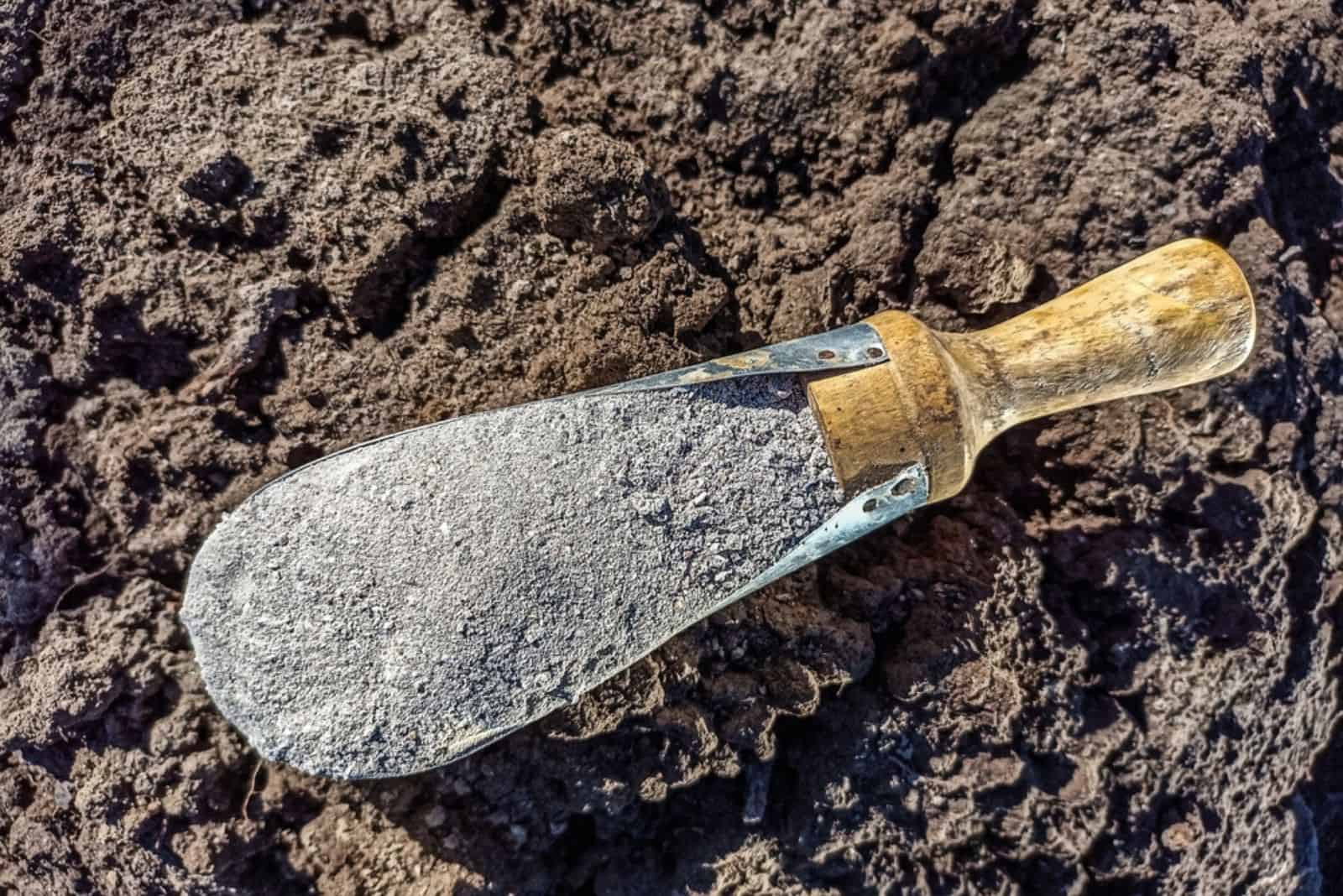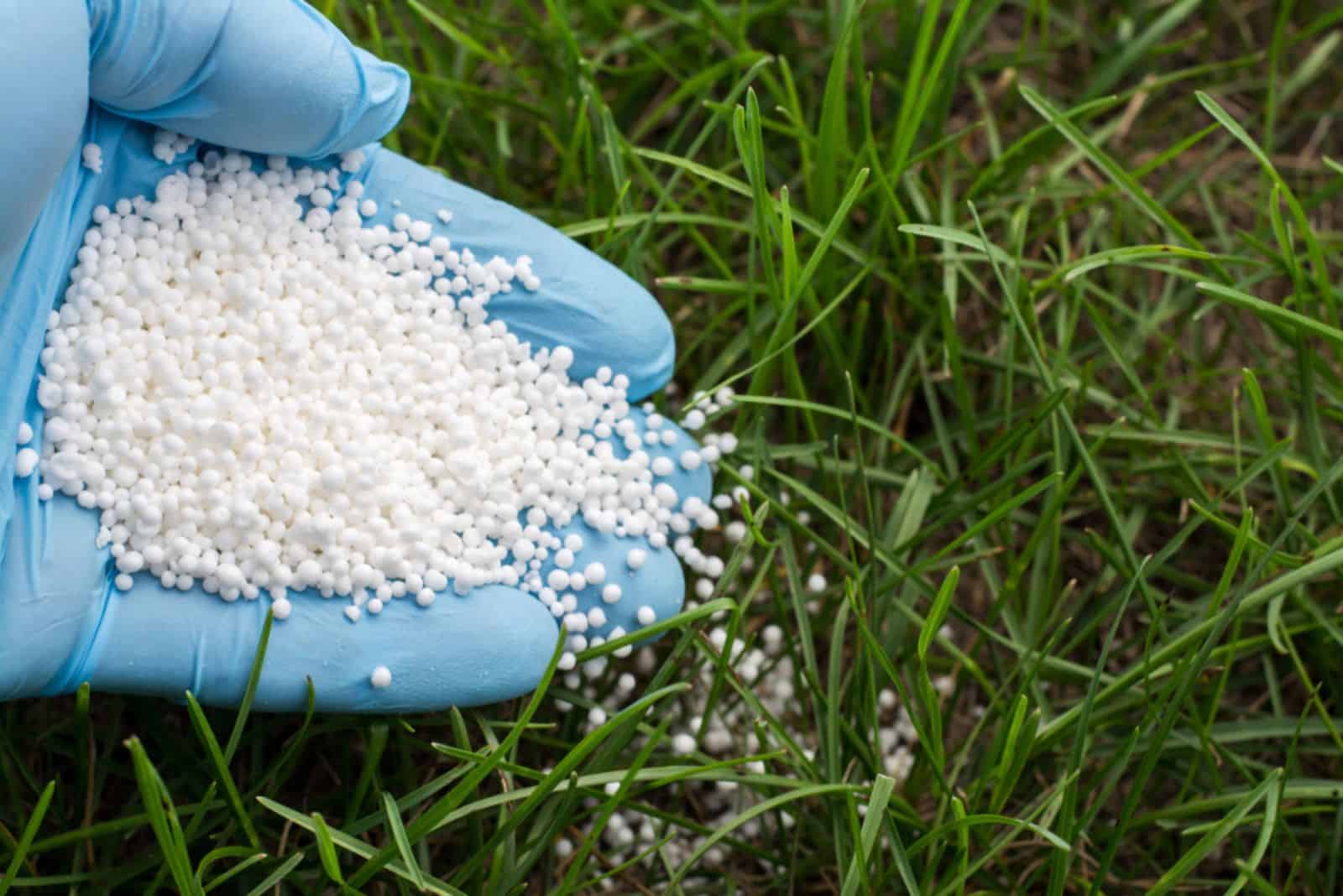Maintaining a green lawn might seem like a piece of cake until you hit a rough patch and yellow spots start appearing all over the place. And when this happens, I always get conflicting opinions about which product to use.
Since it bothered me that no one could give me a straight answer, I went on my own quest and researched which product is better, Ironite or Milorganite.
Basically, Ironite is just a supplement that introduces more iron to your lawn and returns its green look almost instantly. Milorganite, on the other hand, is a complete fertilizer with added iron, so it improves soil quality as well.
As you can see, these products aren’t the same, and you should use them on different occasions, depending on what your lawn needs.
Below you will find more differences between Ironite vs. Milorganite, so let’s get started!
Ironite Re-Greens Yellow Grass
If you notice your grass is turning yellow, it is most likely caused by an iron deficiency. (1)
It won’t be able to synthesize chlorophyll properly, which results in yellowing.
Therefore, applying more iron will help make your lawn thick and green again. And one such product that can help is Ironite.
It contains 20% iron, which is more than enough to help out your yard.
Milorganite Enhances Soil Quality
Unlike Ironite, Milorganite is a fertilizer, so it’ll enhance the soil quality, make it more fertile, and keep your lawn green.
The NPK of this product is 6-4-0, meaning it’ll add a decent amount of nitrogen to your lawn.
It also contains 2.5% iron and will keep your plants safe from iron deficiency, although it won’t be able to deal with it as well as Ironite.
On the other hand, Milorganite is a sustainable option and will ensure your lawn stays green in the long run.
For A Shortage Of Secondary And Micronutrients, Choose Ironite
Ironite is mostly composed of iron, but it also contains other nutrients that can improve lawn health.
It contains 8% calcium, a lack of which causes stunted growth and brown spots. (2)
Ironite also has 5% sulfur, an essential element for building proteins, forming enzymes, and encouraging chlorophyll. Therefore, applying this product will help with various deficiencies, but it can also cause toxicities.
For that reason, first test the soil for all these secondary and micronutrients before adding this element to your lawn.
Additionally, the NPK of Ironite is 1-0-1, so it will release some nitrogen and phosphorus into the soil. However, it’s not enough to maintain your grass throughout the year, so you’ll have to use additional regular fertilizer.
Finally, the grass variety also determines what product to use. For instance, there are many differences between bermuda and centipede, one of which is the amount of nutrients they need. That’s why you should always research the needs of a particular grass before applying any fertilizer.
Milorganite Is A Slow-Release Fertilizer
If you want a steady flow of nutrients for a long period of time, then Milorganite is the product for you.
This slow-release fertilizer lasts about two to two and a half months after application, so you won’t have to feed your lawn all the time.
However, it does take its sweet time to start releasing minerals, meaning you won’t see results right away.
Ironite Releases Minerals Quickly
One of the things to do after lawn aeration, and if your soil test has shown your grass could use more iron, what better product than Ironite to make it green?
It is a fast-release supplement, and if you have yellowing on your lawn, you’ll see the results in just a few weeks.
However, it does depend on the type of Ironite you get. The liquid variety tends to work faster than the granular one.
Finally, Ironite manufacturers advise using it 4 times a year, although you can use it more frequently if you feel the need (but not more than 10 times per year).
Here you can find some tips on how to apply Ironite properly:
Milorganite Is More Eco-Friendly
If you want a more sustainable and eco-friendly option, then Milorganite is your guy.
This product is made up of organic materials, dead microbes that increase the fertility of the substrate and help retain moisture. In fact, Milorganite is safe, so you won’t have to worry about your kids or pets playing on the lawn – not like with Ironite.
The latter product contains arsenic and lead, which can be toxic when consumed and contaminate the groundwater. (3)
That’s why it’s important to avoid applying Ironite during heavy rains and overwatering, not to mention keeping your kids and pets away from the lawn.
Additionally, you don’t have to worry about toxic runoff when using organic or synthetic fertilizers. Research has shown that well-fertilized lawns leach fewer nutrients. (4)
Therefore, using Milorganite will actually improve the “organicness” of your yard.
Ironite Comes In Different Forms
One thing that makes gardeners love Ironite is the fact that you can get it in granular and liquid forms.
Granular Ironite releases nutrients at a slower rate, but it still works in a matter of weeks.
Liquid Ironite, on the other hand, has a different NPK, 7-0-1, to be exact. Therefore, it’ll add a fair dosage of nitrogen in addition to iron.
Furthermore, liquid Ironite has 1% greening iron, making it more of a fertilizer than a supplement.
But be sure to follow the instructions, and your lawn will perk up in no time.
Milorganite Won’t Burn The Grass
If you’ve just researched various Florida grass types and settled on the one you like most, then know that proper care will do wonders for it – and that includes using fertilizers.
One of the things I love about Milorganite is that it won’t burn the grass because of the dead microbes it’s composed of.
However, some state restrictions forbid the usage of this product unless you have a phosphorus deficiency. So be sure to check the state rules, do a soil test, and then choose the appropriate fertilizer.
Using Both Fertilizers Together
There’s absolutely nothing wrong with using Ironite and Milorganite together, but sometimes it can result in too much iron for your lawn.
Remember, Ironite has 20% iron, while Milorganite has 2.5%. Always do a soil test before applying any of these products, as you don’t want to damage your lawn even further.
Additionally, you should use both Ironite and Milorganite in early spring. However, you shouldn’t apply them on the same day to ensure better nutrient absorption.
Is There A Winner?
If you’ve finally decided between zoysia and bermuda and now want to find the perfect product for their care, I have to disappoint you a bit.
Both Ironite and Milorganite are great products, but there isn’t a clear winner in this case.
Yes, Milorganite can improve overall soil quality and keep your lawn green if you can wait a bit. However, if your soil is deficient in iron, it won’t be able to help, so you’ll have to use Ironite.
Therefore, these are completely different products, and I can’t just tell you, “Use this over that!”
Instead, you can use them both if that’s what your lawn requires, but make sure to know which nutrients it needs.
I constantly stress this, but if you want to provide the best care for your front lawn, you have to test the soil first and only apply the necessary minerals.
Final Thoughts
Hopefully you now know everything you need about the Ironite vs. Milorganite debate.
Both are excellent products, but they serve different purposes. Milorganite is suitable for overall lawn care, while Ironite mainly targets iron deficiency.
That’s why you need to examine your grass’s needs and use the correct product to make it thick and green and avoid burning it during the process.
Until next time!
References:
1. Henry, J. M., Gibeault, V. A., & Lazaneo, V. F. (2002). Practical Lawn Fertilization. University of California, Agriculture and Natural Resources.
2. Crain, A. W. & Watson, J. R. (1952). The Home Lawn: Good Turf for Utility and Beauty. Texas Agricultural Experiment Station Bulletin.
3. Aposhian, M. M., Koch, I., Avram, M. D., Chowdhury, U. K., Smith, P. G., Reimer, K. J., & Aposhian, H. V. (2009). Arsenic in Ironite Fertilizer: The Absorption by Hamsters and the Chemical Form. Toxicological & Environmental Chemistry.
4. Kussow, W. R., Combs, S. M., Sausen, A. J., & Soldat, D. J. (2021). Lawn Fertilization. UW Extension, Cooperative Extension.

